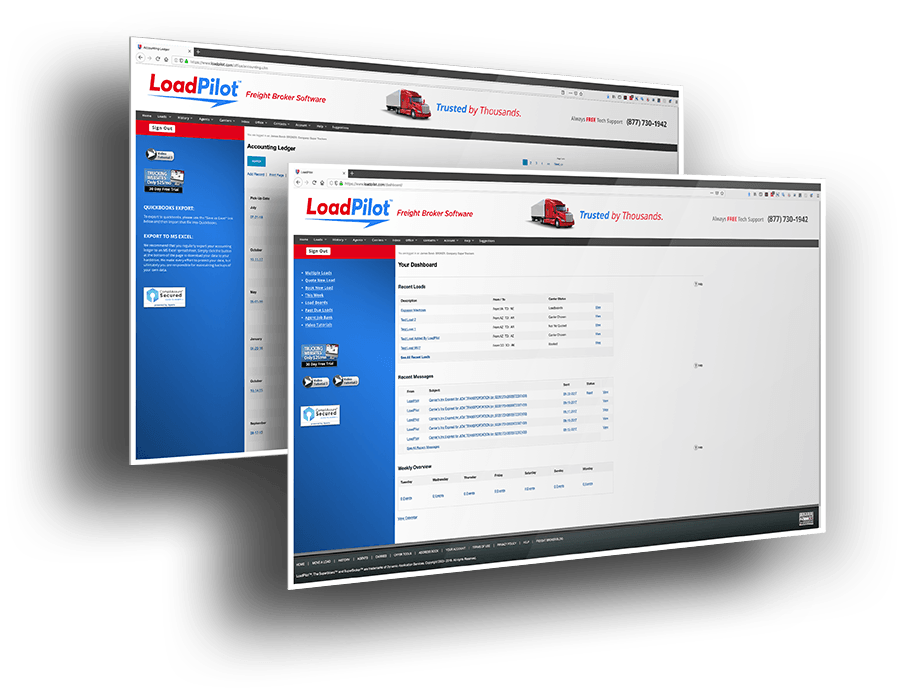Whether you are a freight broker or you are dreaming about a future as s a freight broker, you will find yourself in the middle of a lot of paperwork. Let’s face it, the freight brokering business is a big bunch of transactions with a long paper trail. There are plenty of examples to be found online of forms to use but experienced freight brokers recommend you develop your own contracts, agreements and forms, customizing them to your particular operation.
Once you have a carrier agreement on file, you need to send the carrier a load confirmation and rate agreement form for each specific load. When the carrier picks up the load from the shipper, the shipper will give the carrier a bill of lading listing the goods being transported and any special arrangements the driver needs to make for the load. When the driver reaches the consignee (recipient of the shipment), he needs to have someone there sign for the load. The driver or trucking company will invoice you, the shipper or the consignee for transportation services, depending on the details of the agreement you make.
Carrier/Broker Agreement
The carrier/broker agreement outlines the terms under which you’ll work with a given carrier. It’s designed to apply to all the dealings you have with that carrier and should also provide for any future changes.
Rate Confirmation
Once a carrier agrees to move a given load, you should complete and send a load rate confirmation form. This should include the name and address of both the shipper and the consignee, a trip number (for tracking purposes), any information on extra pickups or stops, pickup and delivery dates, a brief description of the commodity to be shipped, and your commission or brokerage fee structure.
Bill of Lading
At the time of the pickup, the shipper will provide the driver with a bill of lading. This form will include information on the nature and size of the load, its destination and any required special handling. The driver signs the bill of lading as an acknowledgment of receiving the load described by the shipper.
Invoices
After making the delivery and obtaining proof of delivery, the carrier sends you an invoice, along with the bill of lading. With these documents, you can prepare your own invoice to send to the shipper. (Unless, of course, the carrier bills the shipper directly.)
LoadPilot to the Rescue!
The good news is that there is one answer to not only creating these forms for each of your loads but also to track, manage and keep an ongoing ledger of your freight brokerage customers and loads. LoadPilot.com is a freight broker online software that will keep track of your shippers, your carriers, create these forms, sort and store the data and make the daily management of your freight broker business a snap! Try it free for 30 days



